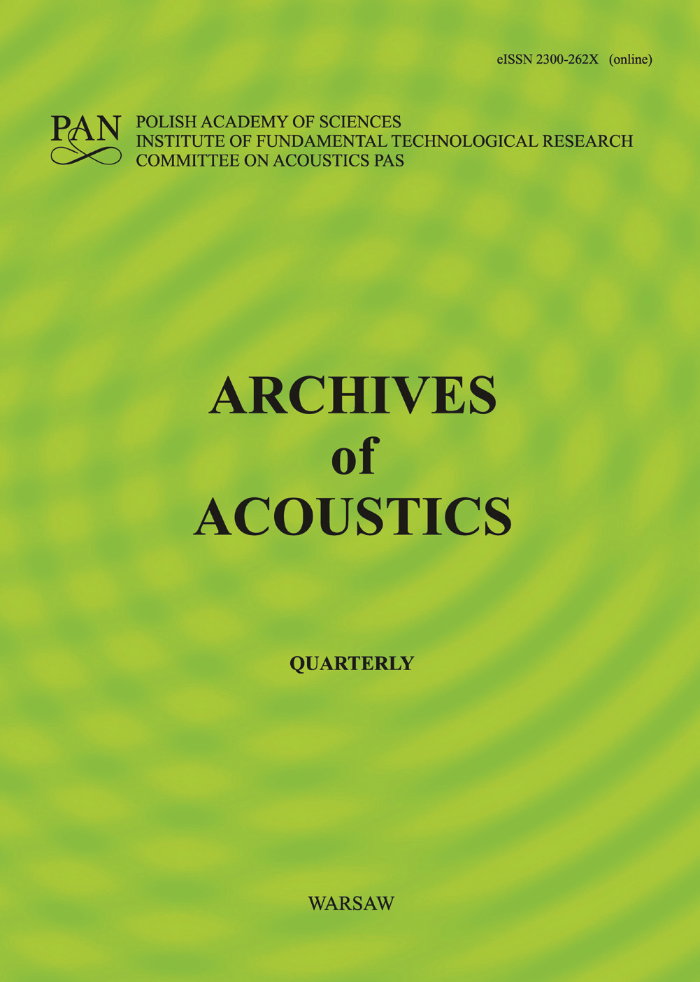Abstract
This article refers to the changes of spectral features of Acoustic Emission (AE) signal. The AE signal is generated during drainage process concerning a foam made of detergent solution. The subroutines to extract the AE events and its spectral features from the real AE signal recordings are described. The effectiveness of classifying procedures based on two linear and one nonlinear algorithms used to recognition different AE patterns is also discussed.References
[1] I. MALECKI and J. RZESZOTARSKA, Acoustic emission generated by gas bubbles [in Polish], Proc. of XI Symposium on Hydroacoustics, Jurata, Poland, University of Gdańsk, pp. 320-331 (1994).
[2] J. RZESZOTARSKA and I. MALECKI, Structure, physical processes and generation of acoustic emission in foams [in Polish], Proc. of XII Symposium on Hydroacoustics, Jurata, Poland, University of Gdańsk, pp. 249-255 (1995).
[3] A.S. SANGANI and R. SURESHKUMAR, Linear acoustic properties of bubbly liquids near the natural frequency of the bubbles using numerical simulations, J. Fluid Mech., Cambridge Univ. Press, 252, pp. 239-264 (1993).
[2] J. RZESZOTARSKA and I. MALECKI, Structure, physical processes and generation of acoustic emission in foams [in Polish], Proc. of XII Symposium on Hydroacoustics, Jurata, Poland, University of Gdańsk, pp. 249-255 (1995).
[3] A.S. SANGANI and R. SURESHKUMAR, Linear acoustic properties of bubbly liquids near the natural frequency of the bubbles using numerical simulations, J. Fluid Mech., Cambridge Univ. Press, 252, pp. 239-264 (1993).


